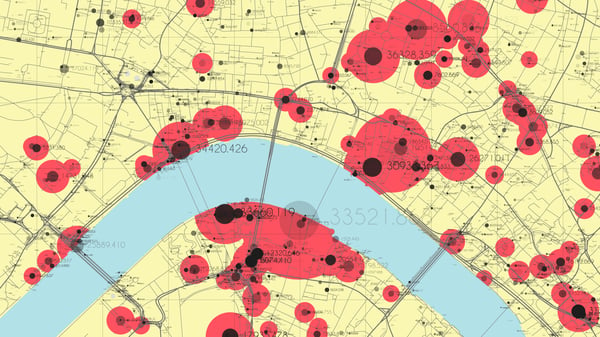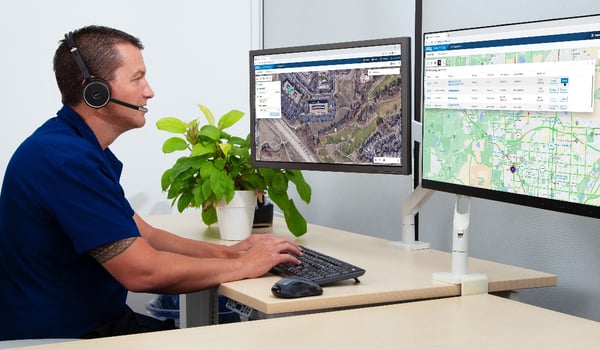4 Must-have Data Points for Dispatch-Billing Alignment and Maximum Reimbursement
How Our Agency Turned a COVID Crisis Into an Opportunity To Embrace Remote Dispatching
During the early days of the COVID-19 pandemic, our dispatch team was hit hard with the virus
Was this information valuable?

During the early days of the COVID-19 pandemic, our dispatch team was hit hard with the virus. Five dispatchers tested positive for COVID, all on the same day. As a result, we suddenly found our agency with nobody staffing the communications center.
The situation put us into crisis mode and provided the impetus for tapping into the cloud capabilities of our dispatching software. We had little choice at the time but to shift quickly from a centralized communications center to a remote dispatching model. By setting up our dispatchers to work from their home offices, we addressed the immediate challenge. What we would soon learn is that we were also setting the stage to handle ongoing COVID-related and other staffing challenges — and improving our customer service, too.
Innovation Born of Necessity
When our dispatchers got sick with COVID, our dispatch supervisor and I sat down to brainstorm how to deal with this unprecedented situation. Suddenly, we had a moment of realization: “Wait a minute — our ZOLL® Dispatch software gives us the capability to put people to work from their homes right now.”
We got to work setting up remote dispatching and used Microsoft Teams for instant messaging with each other on non-PHI topics (e.g., “I’m sending Medic 3 to post at St. Francis instead of Medic 4” — no protected health information). We had the dispatch phone lines forwarded to our company’s cell phones, and our dispatch supervisor and I monitored the software system throughout the day. Our first foray into remote dispatching proved to be so seamless that it was virtually imperceptible to our crews. In fact, several crews asked if they could stop by the dispatch center to pick up paperwork. One crew even offered to bring us coffee because they had no idea we were dispatching remotely from multiple locations. This was the first hint that remote dispatching could work and that it would be no different than if someone was actually seated at a console in the dispatch center.
We initially deployed remote dispatching out of sheer necessity, but once we realized that the approach worked, we decided to commit to a formal trial to determine if we should make it a permanent change. We hired two part-time dispatchers who were located in Charleston, South Carolina, which is about 3½ hours from our headquarters. We advised them that we were running a 30-day trial and that it would not be a good idea to quit their full-time positions just yet. We were operating with a goal in mind: if the 30-day trial period went well, we would transition to 100% remote dispatching. Things did go well — remarkably well — and within 60 days, we made the transition to completely remote dispatching.
Establishing Standard Operating Procedures
It’s one thing to have a successful trial, but once remote dispatching became the norm, we needed to establish a formal, procedural framework to operationalize the new model and ensure that quality controls were in place. For example, we had some obvious concerns and work practices to work out, such as what would happen if a dispatcher didn’t sign on for their shift — how quickly would we know?
We set the phones to forward incoming calls to multiple people to create redundancy. If “Dispatcher A” doesn’t pick up a call, “Dispatcher B” or “Dispatcher C” can do so without delay. We also established a policy whereby our remote dispatchers are expected to be “camera ready” at any point during their shift. That means, they are expected to be presentable, professional, and ready for work, just as they would be if they had reported to the comms center. In addition, through ZOLL Dispatch software, we can see who is logged into the system at any time. We built accountability into our documented procedures, but to be honest, none of the challenges we anticipated have materialized.
There are real benefits to offering a remote work environment and being able to show that we’re making it work. It’s been a strong recruiting tool for us. We’ve been able to hire and retain top talent to fill call taker and dispatcher roles. No one else in our area is offering a work-from-home option right now, that we’re aware of. We feel that it’s giving us a competitive advantage that’s really important with staffing challenges what they are in our industry these days.
Given our location, we have another challenge that’s unique. Remote dispatching means some of our team members are located on the coast of South Carolina. During hurricane season, there is always the potential for them to lose power or internet connectivity at their house, so we built a contingency plan for that situation. Our dispatchers who are located farther inland or out-of-state are on call during severe weather so they can take over if our coastal dispatchers are offline.
Even in fair weather, in the event a dispatcher experiences an internet outage at their location, it’s not nearly as impactful as it would be if we were all in the same building. Our distributed network of dispatchers gives us built-in redundancy and keeps us up and running for our community.
Benefits of Remote Dispatching
All told, remote dispatching has delivered a lot of benefits for our agency. The biggest ones are:
More Qualified Applicants — It’s easier to find and retain experienced EMS workers with an expanded geographic scope that includes all 50 states.
Lower Office Leasing Expenses — When we shifted to remote dispatching, we were able to eliminate one office suite, saving $20,000 per year.
Significantly Improved Dispatcher Retention — Since transitioning to remote dispatching, we have been able to recruit and retain very experienced, top-notch dispatchers. A stable team with virtually zero turnover has multiple benefits, from cost savings to workflow efficiency.
Redundancy and Enhanced Connectivity — Distributed dispatch means virtually no risk of downtime due to power or internet outages.
Improved Customer Service — High-quality, experienced dispatchers definitely contribute to a better customer experience for our customers.
Tips for Switching to Remote Dispatching
Hire a Director of Information Technology (IT) — Having an IT director is crucial. You need to ensure compliance with security architecture and protecting patient information, as well as managing the technology infrastructure of remote dispatching. Our IT Director visits each dispatcher’s residence to set up their workspace, set up security protocols, and more.
Educate Your Field Providers — Some EMS field providers may be uncomfortable with not seeing a team in a dispatch center. Find ways to educate them and provide opportunities for virtual interaction with dispatchers to establish the connection and bonding.
Trust The Process — Plan your trial carefully, and then trust the process. Concerns will arise, but don’t let them overshadow the opportunities. Assess objectively what remote dispatch can and can’t do for your agency.
Remote dispatch was a surprisingly smooth transition for Thorne Ambulance Services. I believe it’s going to be the private sector operations like ours who will likely be the early adopters driving change. The public sector will catch on over time. In the meantime, those of us who have the freedom to try things and innovate can enjoy the benefits — like the influx of experienced, high-quality dispatch applicants we’ve attracted at a time when other ambulance services are struggling to fill positions.
Read More About Innovations in EMS Dispatch:
Related Posts
How EMS Agencies Can Reframe Need and Refocus Resources With Geospatial Analytics
How To Minimize Radio Chatter and Reduce Guesswork With Smarter Dispatch Resource Management
ZOLL Pulse Blog
Subscribe to our blog and receive quality content that makes your job as an EMS & fire, hospital, or AR professional easier.
ZOLL Pulse Blog
Subscribe to our blog and receive quality content that makes your job as an EMS, fire, hospital, or AR professional easier.




